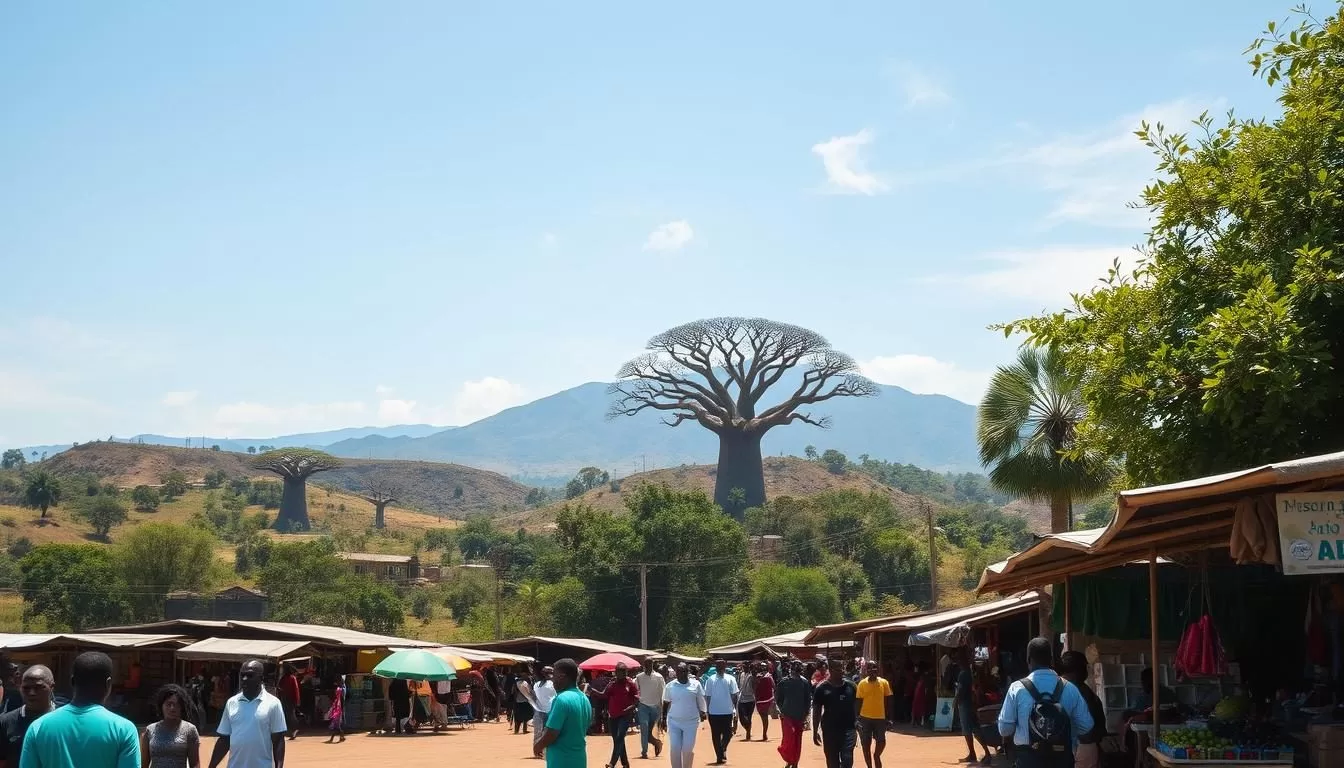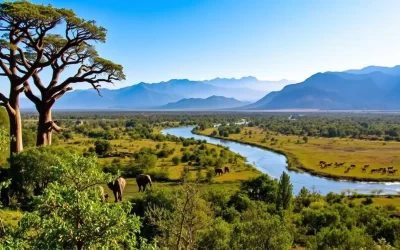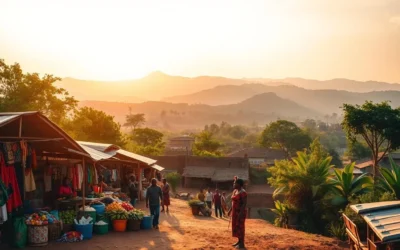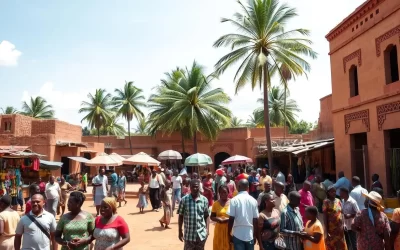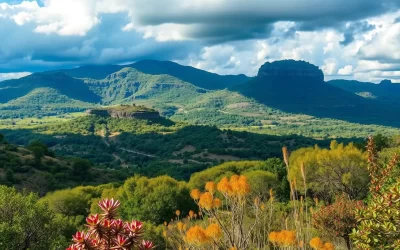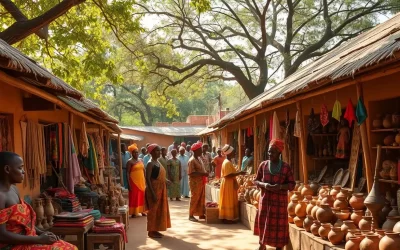✓ Accommodations✓ Flights✓ Rental Cars
Are you looking for a unique cultural experience in West Africa? Look no further than Notse, a hidden gem in Togo. This historically significant town offers a blend of cultural and natural experiences that will make your visit unforgettable.
Notse is considered the cultural heart of Togo, and it’s a place where you can experience the rich heritage of the Ewe people. From traditional architecture to vibrant local markets, there’s no shortage of exciting attractions and experiences to explore.
In this guide, we’ll introduce you to the top things to do in Notse, helping you plan an unforgettable visit to this incredible town.
Discovering Notse: The Cultural Heart of Togo
As you step into Notse, you’re immediately immersed in the rich cultural heritage of Togo. This town is more than just a historical site; it’s a living, breathing embodiment of the Ewe people’s traditions and customs.
Location and Background
Notse is the ancestral home of the Ewe people, one of the largest ethnic groups in Togo. The town’s architecture, characterized by historic “mud houses,” is a testament to the Ewe people’s skill and creativity.
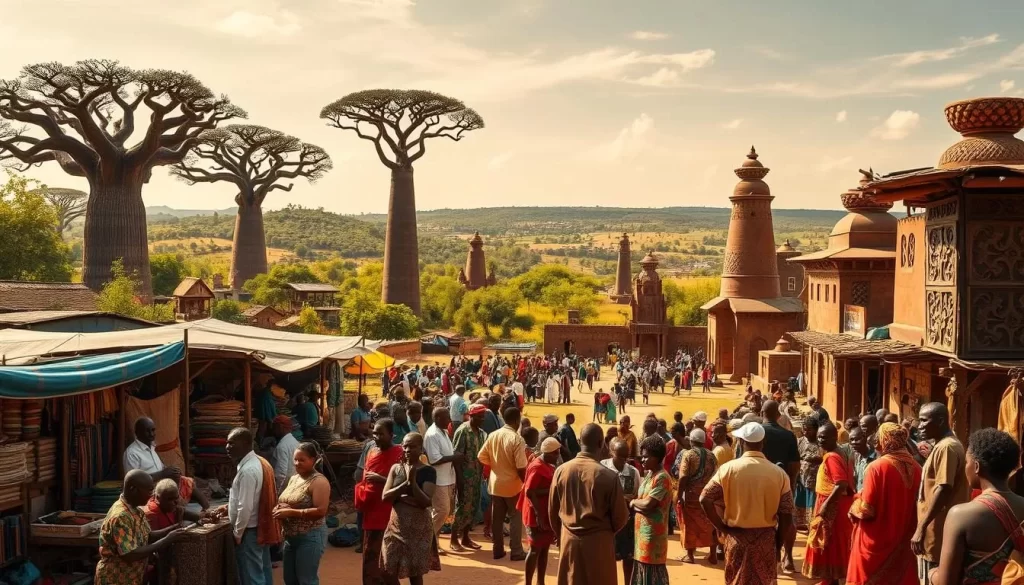
Historical Significance as the Cradle of Ewe Culture
Notse holds profound historical significance as the birthplace of Ewe culture, with traditions dating back many centuries. The Ewe people consider Notse a sacred place, maintaining strong connections to their heritage through regular cultural ceremonies.
| Cultural Aspect | Description | Significance |
|---|---|---|
| Traditional Practices | Preserved through generations | Unique blend of indigenous practices |
| Cultural Ceremonies | Regularly performed | Maintains connection to ancestral heritage |
| Historical Narratives | Reveals Ewe identity and culture | Provides context for cultural experiences |
Understanding Notse’s history and cultural significance provides valuable context for appreciating the cultural experiences available to visitors. The town offers a unique blend of traditional and cultural practices that are a true reflection of the Ewe people.
When to Visit Notse, Togo
Planning a trip to Notse, Togo, requires understanding the best times to visit this culturally rich destination. The timing of your visit can significantly impact your experience.
Best Seasons for Travel
The best time to visit Notse is during the dry season, which typically runs from November to February. This period is ideal for culture enthusiasts as it allows for comfortable exploration of the town’s historical sites and participation in local festivals.
Weather Considerations and Travel Tips
As a visitors, you should be aware that March and April are extremely hot, making outdoor activities challenging. The rainy season, from May to October, can make some roads impassable. Here are some travel tips:
- Pack lightweight, breathable clothing.
- Bring sun protection, including hats and sunscreen.
- Stay hydrated, especially during the hotter months.
- Check for any travel advisories before your trip.
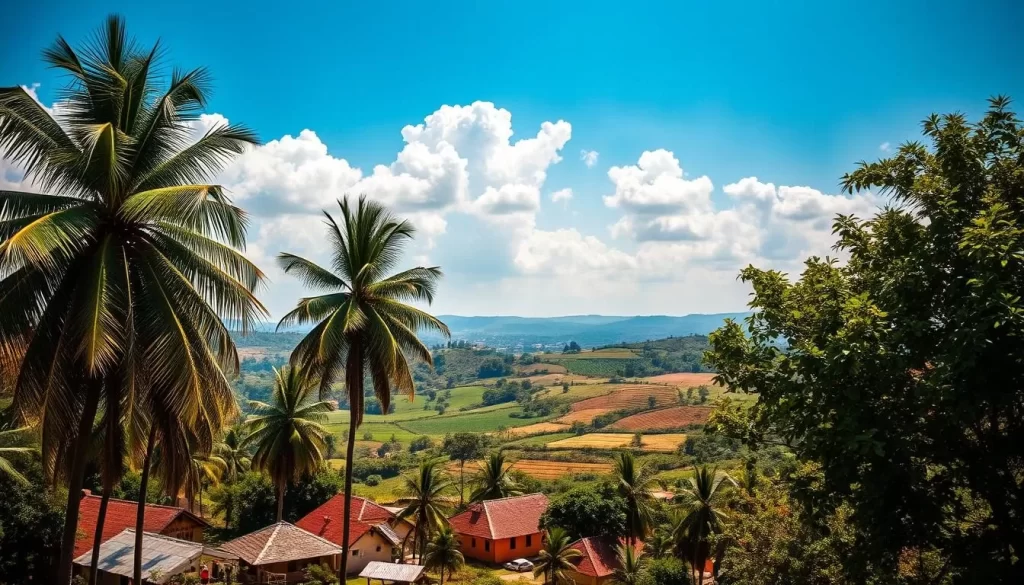
Explore the Traditional Architecture
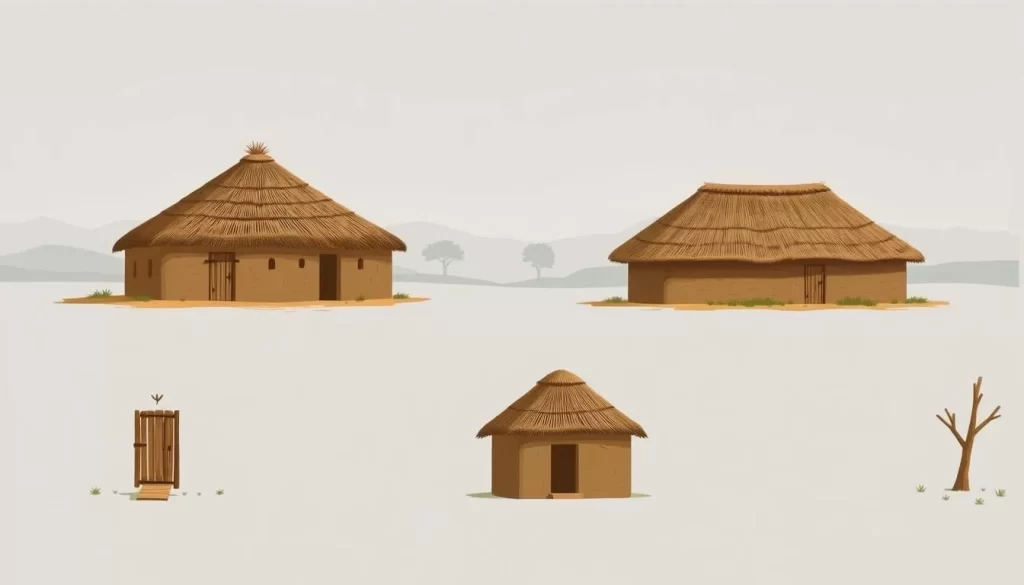
The traditional mud houses of Notse, Togo, are not just dwellings; they are embodiments of the Ewe people’s cultural identity and heritage. These structures, built with mud and thatched roofs, demonstrate the skill and creativity of the ancient Ewe.
The Famous Mud Houses of Notse
The mud houses of Notse are renowned for their architectural style, which reflects deep cultural symbolism and spiritual beliefs central to Ewe identity. Each element of these traditional structures has significance, from the orientation of the entrance to the arrangement of living spaces.
Architectural Significance in Ewe Culture
The architectural traditions of Notse have had a lasting impact on the region. The construction process itself is a communal activity that strengthens social bonds and passes knowledge to younger generations. These mud houses serve as physical manifestations of the Ewe people’s connection to the land and their sustainable approach to living in harmony with nature and culture.
- The architectural style of Notse’s mud houses reflects deep cultural symbolism and spiritual beliefs central to Ewe identity.
- Each element of these traditional structures has significance, from the orientation of the entrance to the arrangement of living spaces.
- The construction process itself is a communal activity that strengthens social bonds and passes knowledge to younger generations.
- These architectural traditions have influenced building practices throughout the region, showing the far-reaching impact of Ewe culture.
- The mud houses serve as physical manifestations of the Ewe people’s connection to the land and their sustainable approach to living in harmony with nature.
- Comparing these structures to modern buildings highlights the ingenious solutions developed by Ewe architects to address local environmental challenges.
- The preservation efforts for these architectural treasures include documentation of building techniques and restoration projects that maintain their authenticity.
Visiting Notse offers a unique opportunity to experience the beauty and significance of these traditional mud houses firsthand. As you explore, you’ll gain a deeper appreciation for the Ewe people’s architectural achievements and their contribution to the rich cultural heritage of Togo.
Visit the Ewe History Museum
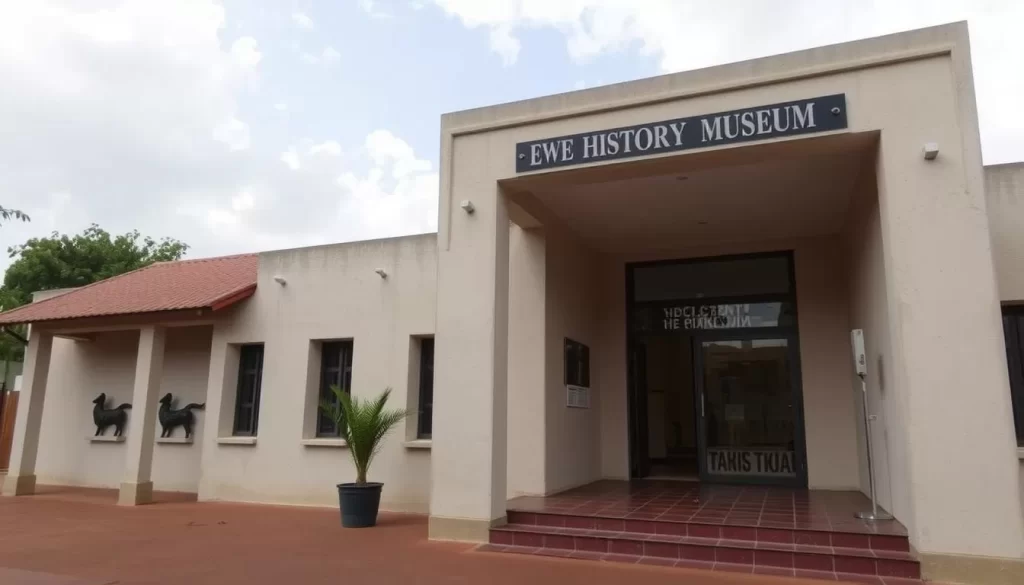
Learn More
Immerse yourself in the history and culture of the Ewe people by visiting the Ewe History Museum. This museum offers a detailed insight into the rich cultural heritage of the Ewe community.
Historical Artifacts and Exhibitions
The museum houses a variety of historical artifacts, including ancient tools, traditional jewelry, and ceremonial costumes. These exhibits provide cultural experiences that are both educational and engaging for visitors.
Learning About Ewe Traditions
The Ewe History Museum provides comprehensive information about Ewe traditions, including religious practices, social structures, and governance systems. You can learn about traditional Ewe ceremonies and rituals, as well as the significance of symbols and motifs found in Ewe art and textiles. The museum also highlights the oral traditions of the Ewe people, including proverbs and historical narratives.
Experience the Vibrant Notse Market
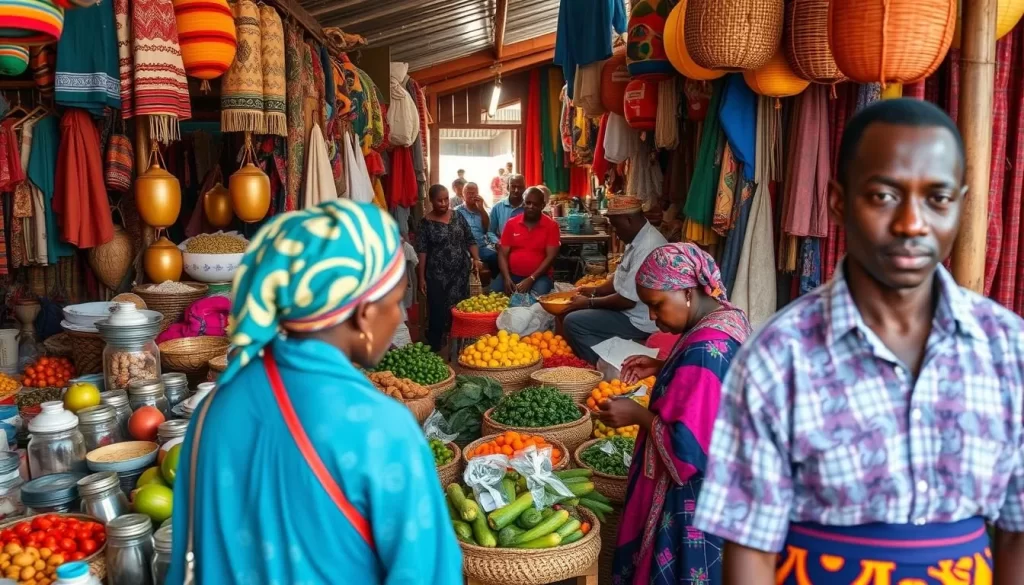
Immerse yourself in the vibrant Notse Market, a hub of local culture and traditions. The market offers a wide variety of local products and crafts, creating a lively atmosphere that is quintessentially Togolese.
Local Products and Crafts
The Notse Market is renowned for its diverse array of local products and crafts. You can find everything from handmade crafts to local delicacies, showcasing the rich cultural heritage of the region. The market is a great place to discover unique souvenirs and experience the local culture firsthand.
Interacting with Local Vendors
Engaging with local vendors at the Notse market provides visitors with authentic cultural experiences. Vendors are often willing to share stories about their crafts and products, offering insights into local traditions. By interacting with them, you gain a deeper understanding of the community’s economic systems and social networks, making the market a truly enriching experience in the heart of vibrant markets of Notse.
Notse, Togo: Best Things to Do – Top Picks
Immerse yourself in the cultural heart of Togo by exploring the top picks in Notse. This city is a treasure trove of cultural experiences and heritage that will leave you enriched with unforgettable memories.
Cultural Performances and Festivals
Notse is known for its vibrant cultural performances and festivals that showcase the rich culture of the Ewe people. You can enjoy performances of Ewe dance, which are an integral part of local celebrations and festivals.
- Experience the dynamic Ewe dance troupes that perform during various ceremonies and celebrations.
- Participate in the call-and-response singing that accompanies many dances, creating a sense of community.
Traditional Music and Dance Experiences
The traditional music of Notse features distinctive polyrhythmic patterns played on a variety of instruments, including drums, bells, and rattles. You can arrange to see performances by local dance troupes and even participate in workshops to learn basic Ewe dance steps and drumming techniques.
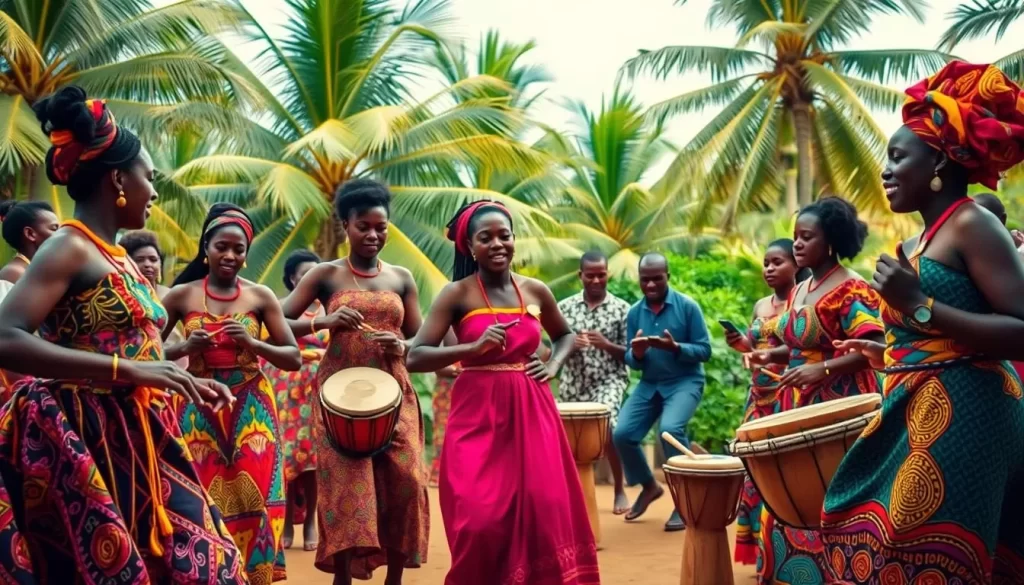
Taste the Local Cuisine
As you explore Notse, Togo, you’ll discover a rich culinary scene that reflects the local culture. The town offers a variety of traditional dishes that are sure to tantalize your taste buds.
Traditional Dishes: Fufu, Akple, and Djenkoume
Notse is known for its authentic Togolese cuisine, featuring dishes such as fufu, a staple made from mashed yam, and okra soup. Other local favorites include akple, a corn-based dish, and djenkoume, a flavorful tomato and corn delicacy. These traditional dishes are a testament to the rich food culture of the region.
Best Restaurants in Notse
For an authentic dining experience, head to Restaurant Chez Maman, located in the heart of Notsé. This cozy restaurant serves traditional Togolese dishes with friendly service. Alternatively, visit Le Palais de la Gastronomie for a wide variety of local and international dishes. La Taverne du Bon Vivant is another great option, offering tapas-style Togolese specialties. These eateries showcase the best of Notse’s local cuisine, providing visitors with a truly immersive culinary experience.
Outdoor Activities Around Notse
You can experience the best of Notse’s outdoors through various activities that highlight the region’s unique landscapes and wildlife. The area surrounding Notse is rich in natural beauty, offering numerous opportunities for outdoor enthusiasts.
Nature Exploration
The diverse landscapes around Notse are perfect for hiking and cycling. You can explore the scenic views and enjoy the local nature.
- Guided tours are available for those who want to explore the region’s natural beauty.
- Cycling paths offer a relaxing way to enjoy the scenery.
Sports and Recreation
Sports enthusiasts will find plenty of opportunities to engage in their favorite activities. Football is a popular sport in Notse, with local matches that you can watch or even join.
| Activity | Description |
|---|---|
| Football | Watch or join local matches at community fields. |
| Water Sports | Enjoy kayaking and swimming in nearby lagoons and rivers. |
| Bird Watching | Spot various avian species with local guides. |
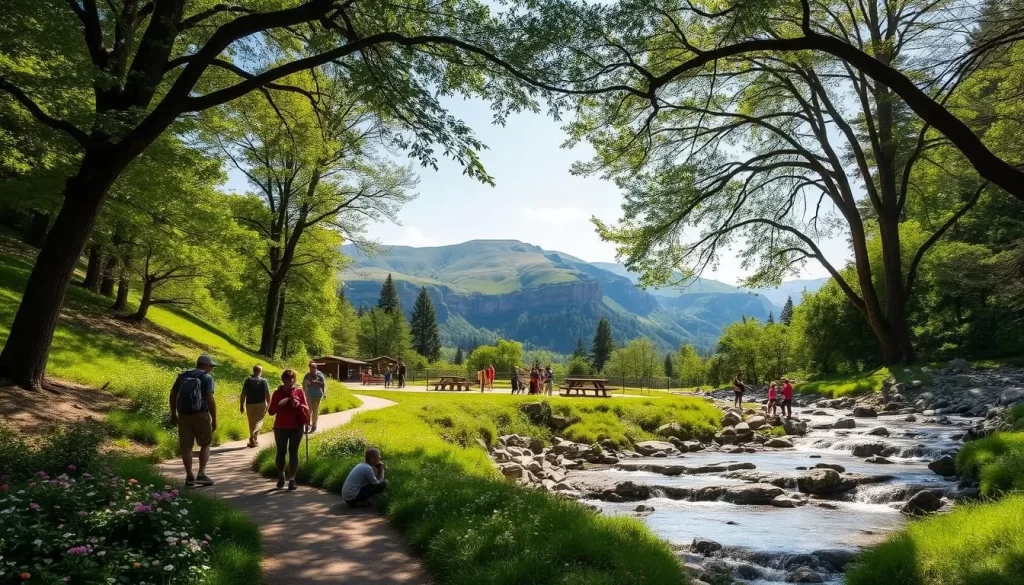
Day Trips from Notse
Day trips from Notse offer a chance to experience the diverse landscapes and cultures of Togo. Visitors can explore nearby attractions that showcase the country’s natural beauty and rich history.
Fazao-Malfakassa National Park
Fazao-Malfakassa National Park is Togo’s largest national park, offering wildlife viewing opportunities amidst its lush nature. The park is home to a variety of flora and fauna, making it a great destination for wildlife enthusiasts.
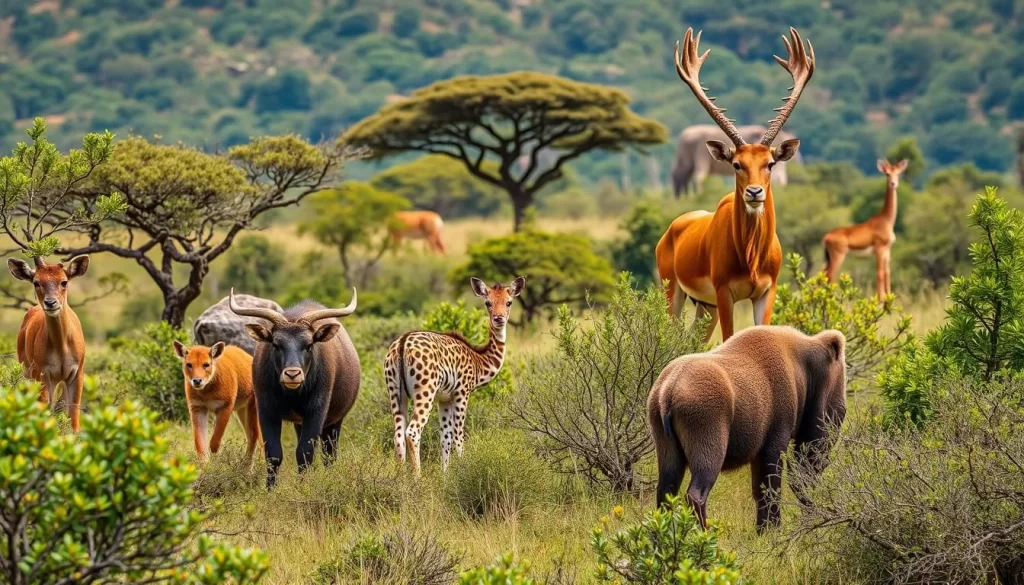
Nearby Cities: Lomé, Kpalimé, and Atakpamé
The cities near Notse, such as Lomé, the capital of Togo, Kpalimé, known for its artistic community, and Atakpamé, with its vibrant market, offer unique cultural experiences. Visitors can enjoy the views of the surrounding landscapes, explore local markets, and delve into the history of the region.
These cities provide a glimpse into Togolese urban life, with opportunities to visit museums, enjoy local cuisine, and experience the blend of cultures that characterize West Africa.
Where to Stay in Notse
Notse, a city steeped in culture, offers various accommodation options for visitors. When visiting Notsé, it’s essential to choose a place that respects and reflects the local customs and traditions.
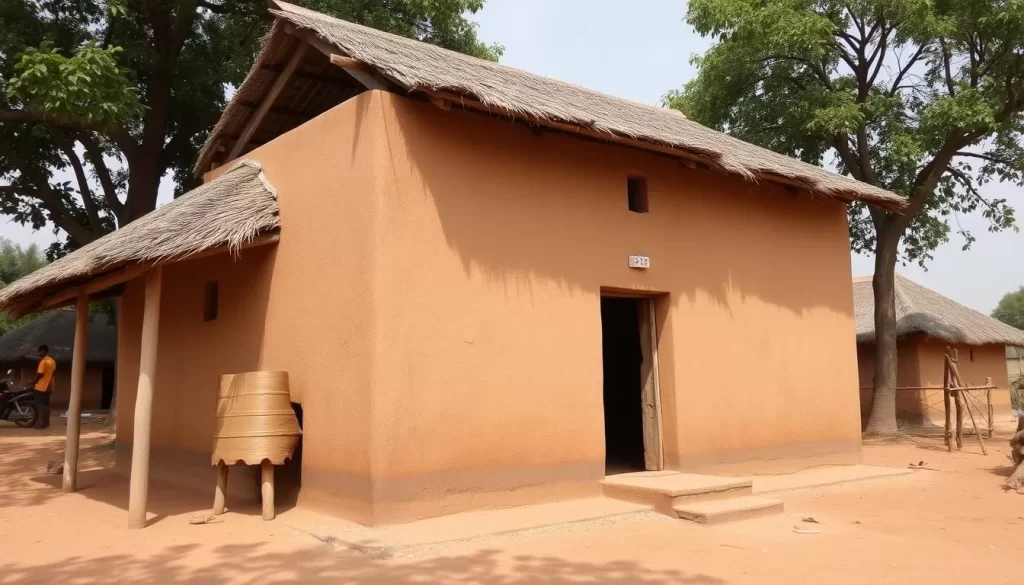
Accommodation Options
Notse provides a range of accommodations, from simple guesthouses to more luxurious lodges. Visitors can choose based on their budget and preferences, ensuring a comfortable stay that aligns with their travel plans.
Tips for a Comfortable Stay
To ensure a pleasant experience, visitors should pack accordingly. This includes lightweight clothing, appropriate footwear for activities, and respect for local customs. Additionally, considering perfect relaxation and having a plan for safe drinking water will enhance your stay. Although Notse is not known for water sports, being prepared for the local environment is key.
- Pack lightweight, breathable clothing.
- Bring appropriate footwear for walking.
- Respect local customs regarding dress and behavior.
- Consider a water filter or purification tablets.
- Learn basic phrases in French or Ewe.
- Prepare for intermittent electricity.
- Use mosquito repellent and a bed net.
- Schedule downtime for perfect relaxation.
Conclusion
Immerse yourself in Notse’s unique blend of tradition and modernity. This hidden gem in West Africa offers a rich cultural heritage and natural beauty. From its historical significance as the cradle of Ewe culture to its vibrant attractions, Notse provides experiences that leave lasting impressions. By exploring Notse, you contribute to preserving its heritage while gaining insights into the local way of life. Whether drawn by history, culture, or natural beauty, Notse rewards visitors with authentic experiences.
The above is subject to change.
Check back often to TRAVEL.COM for the latest travel tips and deals.
